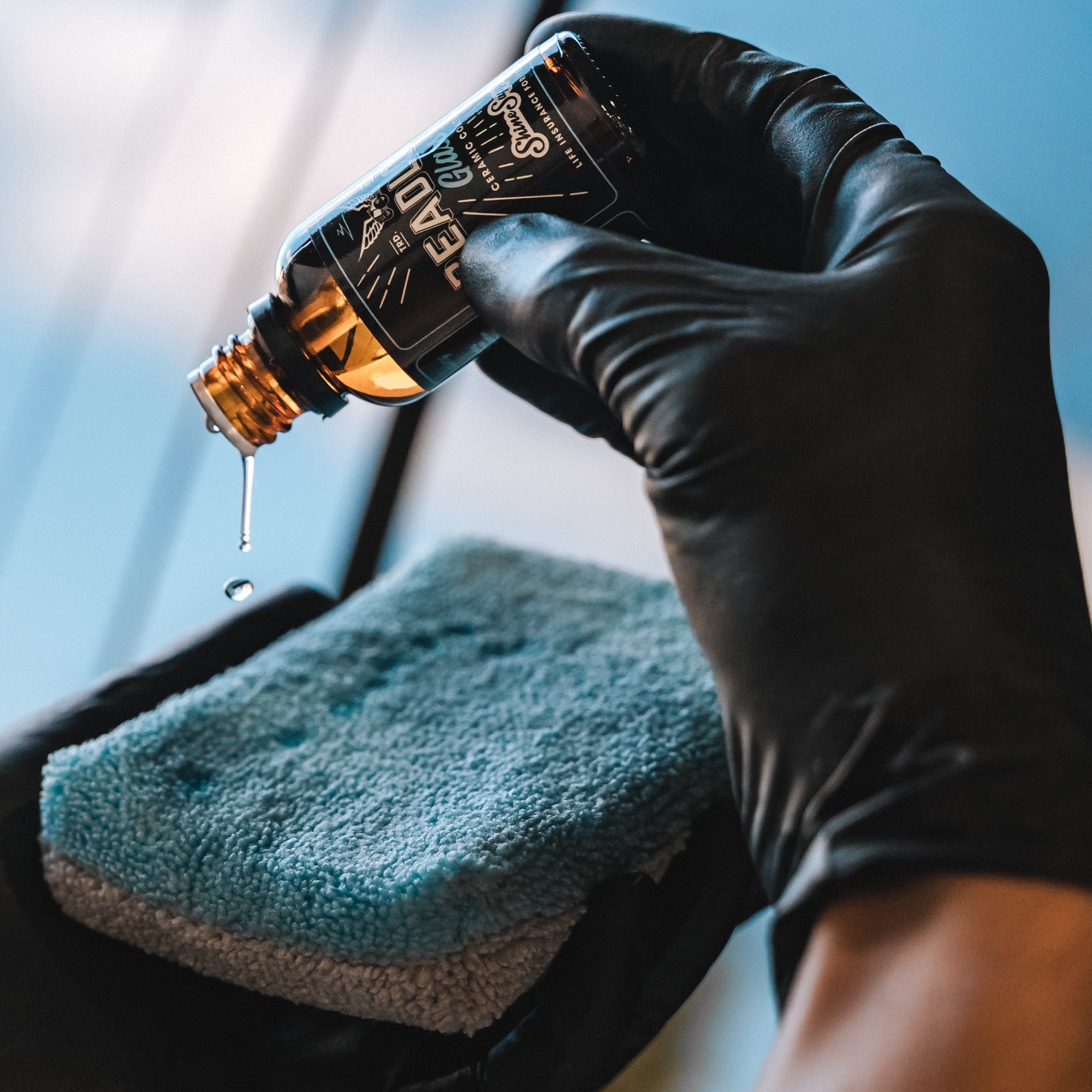Checking Out the Scientific Research Behind Ceramic Coating and Its Effect on Auto Detailing
The application of ceramic finishing in automobile outlining represents a significant advancement in automotive treatment, rooted in its innovative chemical properties, largely silica dioxide and titanium dioxide. As we discover the ins and outs of the application process and the long-term effects for lorry maintenance, it becomes clear that the selection of ceramic layer can essentially modify one's approach to auto treatment.
What Is Ceramic Covering?
Ceramic covering is a modern-day service that has gotten popularity in the auto detailing sector for its ability to give lasting defense for car surface areas. This advanced safety layer is usually made up of silica dioxide (SiO2), which develops a solid bond with the vehicle's paint, developing a resilient guard against ecological contaminants. Unlike standard wax or sealants, ceramic finishings offer remarkable resistance to UV rays, chemical stains, and physical abrasions.
The application of ceramic finish involves a thorough process, where the automobile's surface area is thoroughly cleansed and decontaminated before the finish is used (Ceramic Coating). Once cured, the finishing boosts the automobile's gloss, deepness, and quality, offering a showroom-quality surface that lasts for several years. Among the key advantages of ceramic finishing is its hydrophobic properties, which ward off water and dust, making upkeep less complicated and reducing the frequency of washes
The Chemistry of Ceramic Covering
An essential element of ceramic finish exists in its chemical structure, mostly identified by the existence of silica dioxide (SiO2) This substance is important to the development of a long lasting, safety layer that bonds chemically to the automobile's surface area.
In enhancement to SiO2, several ceramic coatings include titanium dioxide (TiO2) and various other ingredients to boost their efficiency features. TiO2, for example, adds to boosted firmness and chemical resistance. The interaction between these substances develops an unique molecular framework that uses a high level of protection against ecological aspects such as UV rays, acid rain, and oxidation.
Furthermore, the application procedure often includes a meticulous preparation of the surface area to make certain optimal bond of the finish. This chemistry not only ensures a durable finish but also improves the aesthetic charm of the lorry. Comprehending the detailed chemistry behind ceramic finishings is necessary for detailing specialists who intend to supply premium security and longevity for their clients' automobiles.
Benefits of Ceramic Coating
While outlining specialists usually highlight the advantages of ceramic coverings, their advantages prolong far beyond aesthetics. Ceramic finishes produce a hydrophobic surface area that wards off water, dust, and grime, substantially lowering the regularity of washes and the effort called for to maintain a car's look.
Furthermore, ceramic coatings improve the long life of the car's surface. Unlike standard waxes or sealers, which might last a few months, ceramic coatings can withstand for many years, offering a lasting service for vehicle care. This resilience equates to cost financial savings, as owners are much less most likely to require frequent reapplication.
Additionally, ceramic finishings are resistant to chemical spots and etching, which can occur from acidic compounds like bird droppings or tree sap. This resistance not just protects the vehicle's visual appeals yet also minimizes prospective damage - Ceramic Coating. Generally, the investment in ceramic covering offers car proprietors a significant return in regards to defense, simplicity of upkeep, and lasting aesthetic allure, making it a progressively popular selection in the realm of automotive describing
Application Refine Described

As soon as the surface area is properly prepared, the ceramic finish can be applied. It is generally done in a regulated environment, such as a garage or describing bay, to stop contamination from dust and particles. Using an applicator pad, the professional applies the finish in small sections, functioning in a crosshatch pattern to ensure also coverage. It is necessary to follow the maker's guidelines concerning application density and treating times.
Once cured, the ceramic covering develops a solid bond with the paint, providing enhanced protection and a glossy finish. Proper application is vital to take full advantage of the durability and effectiveness of the ceramic finish.

Long-lasting Influence On Vehicle Treatment
The long-term impact of ceramic covering on vehicle care is substantial, as it essentially alters how proprietors maintain their vehicles. By creating a durable, hydrophobic layer on the automobile's surface area, ceramic finishings minimize the adherence of dirt, gunk, and pollutants. This residential or commercial property reduces the frequency of cleaning required, eventually preserving next page water and cleaning items.
Additionally, the UV security provided by ceramic finishes assists to prevent oxidation and fading of the automobile's paint, preserving its aesthetic appeal and resale worth in time - Ceramic Coating. This safety barrier likewise decreases the chance of scrapes and swirl marks, which are usual problems in conventional paint surfaces
Additionally, ceramic coatings help with much easier upkeep, permitting proprietors to cleanse their lorries with very little effort. The smooth surface makes it difficult for impurities to bond, allowing easier elimination during routine cleansing.
Over time, the financial investment in ceramic finish may lead to set you back financial savings in car treatment services and products. Generally, the withstanding advantages of ceramic coatings not just improve the appearance of cars but likewise contribute to an extra reliable and lasting approach to automobile upkeep.
Conclusion
In conclusion, the application of ceramic layer stands for a considerable development in car describing, driven by its distinct chemical structure of silica dioxide and titanium dioxide. This technology not just enhances the aesthetic appeal of automobiles yet additionally gives durable protection versus environmental risks and put on. The long-term advantages, consisting of minimized upkeep frequency and improved toughness, emphasize the value of ceramic layers as a necessary investment for maintaining vehicle appearance and stability over time.
